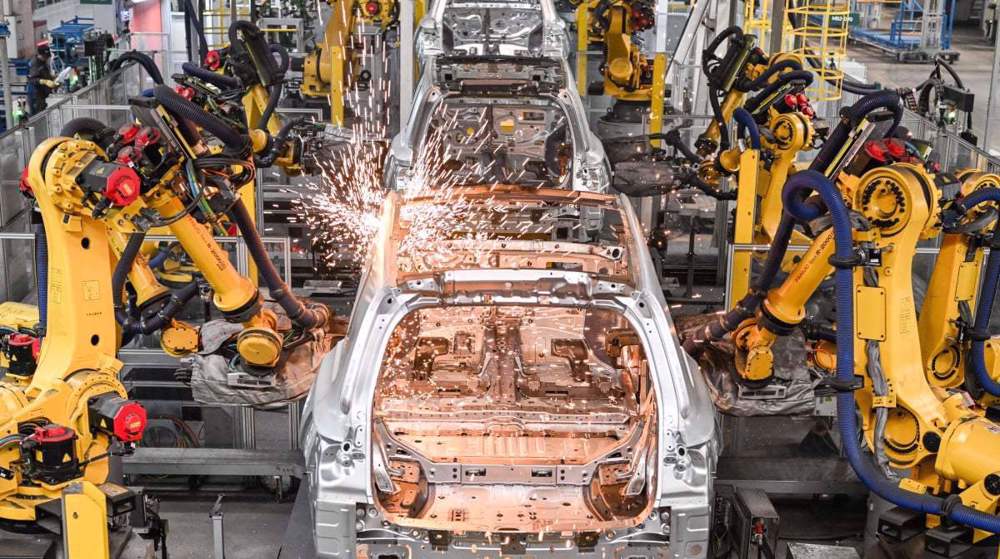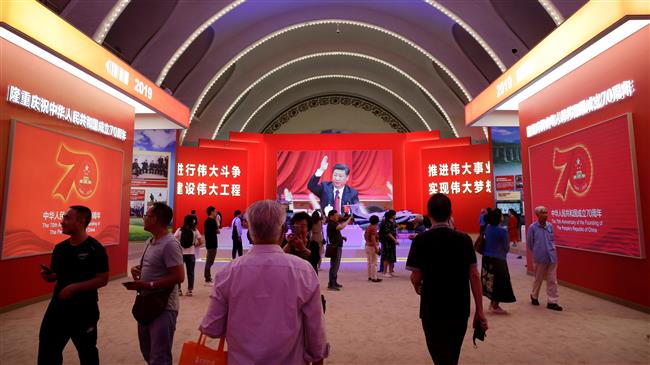US factory activity sinks to 10-year low in September
US manufacturing activity tumbled to a more than 10-year low in September as lingering trade tensions weighed on exports, further heightening financial market concerns of a sharp slowdown in US economic growth in the third quarter.
The survey from the Institute for Supply Management (ISM) on Tuesday came on the heels of data last week showing a moderation in consumer spending in August.
The US economy’s fading fortunes have been blamed on the White House’s 15-month trade war with China, which has sapped business confidence and undermined manufacturing.
“This is serious,” said Torsten Sløk, chief economist at Deutsche Bank Securities in New York. “There is no end in sight to this slowdown, the recession risk is real.”
The Federal Reserve cut interest rates again last month after lowering borrowing costs in July for the first time since 2008 to keep the longest economic expansion in history on track.
Fed Chair Jerome Powell said trade policy tensions, which “have waxed and waned, and elevated uncertainty is weighing on US investment and exports.”
Powell said US central bank contacts had told policymakers that trade policy uncertainty “has discouraged them from investing in their businesses.”
The ISM said its index of national factory activity dropped 1.3 points to a reading of 47.8 last month, the lowest level since June 2009, when the recession was ending. A reading below 50 indicates contraction in the manufacturing sector, which accounts for about 11% of the US economy. September’s reading marked the second straight month that the index broke below the 50 threshold.
The index has now declined for a sixth consecutive month and is in stark contrast with a rebound in the so-called hard data like industrial production, which showed output at factories rising in August.
Still, the ISM index needs to drop below the 42.9 level to signal a recession in the broader economy.
The US-China trade war also coincides with a fading boost from last year’s $1.5 trillion tax cut package. The ISM said comments from manufacturers “reflect a continuing decrease in business confidence,” and also noted that “global trade remains the most significant issue.”
Economists polled by Reuters had forecast the ISM index rising to 50.1 in September.
The ISM’s forward-looking new orders sub-index edged up to a reading of 47.3 last month from 47.2, which was the lowest level since June 2012. A measure of export orders plunged 2.3 points to a reading of 41.0 in September. The survey’s factory employment index dropped to 46.3 last month from 47.4 in August.
The dollar fell against a basket of currencies after the data. US Treasury prices rose. US stocks were trading lower.
Construction Spending Tepid
Slowing economic growth was also underscored by a separate report from the US Commerce Department showing construction spending edged up 0.1% in August. Data for July was revised down to show construction outlays unchanged instead of nudging up 0.1% as previously reported.
Economists polled by Reuters had forecast construction spending increasing 0.4% in August. Construction spending fell 1.9% on a year-on-year basis in August.
Spending on private residential projects jumped 0.9%, the biggest gain since November 2018, after rising 0.6% in July. Housing starts and building permits surged to a more than 12-year high in August, government data showed last month, lifted by declining mortgage rates.
The 30-year fixed mortgage rate has dropped about 130 basis points from last year’s highs to an average of 3.64%, according to data from mortgage finance agency Freddie Mac.
Spending on private nonresidential structures, which includes manufacturing and power plants, dropped 1.0% in August to the lowest level since January 2018. Investment in private nonresidential structures decreased 1.6% in July.
Outlays on private nonresidential structures have been weighed down by a manufacturing downturn due to trade tensions and cheaper energy products. Investment in nonresidential construction fell at its steepest pace in more than three years in the second quarter. That contributed to business investment declining for the first time in more than three years.
Spending on private construction projects was unchanged in August after declining for four straight months.
Investment in public construction projects rose 0.4% after increasing 1.4% in July. Spending on state and local government construction projects gained 0.6%. That followed a 1.7% surge in July. Outlays on federal government construction projects dropped 2.2% in August after falling 2.5% in the prior month.
(Source: Reuters)
US troopers crack down on pro-Palestinian protests at University of Texas
VIDEO | German warship departs Red Sea as EU 'naval mission' fails
VIDEO | Palestinians inspect rubble of destroyed building in Rafah
Yemeni forces strike US, Israeli vessels in fresh pro-Palestinian operations
‘Say no to Biden’: US college being pressed not to endorse genocide
VIDEO | UN: Alarming food insecurity crisis grips Afghanistan
VIDEO | Stuck in quagmire
UK suspends legal assessments of Israeli violations in Gaza















 This makes it easy to access the Press TV website
This makes it easy to access the Press TV website